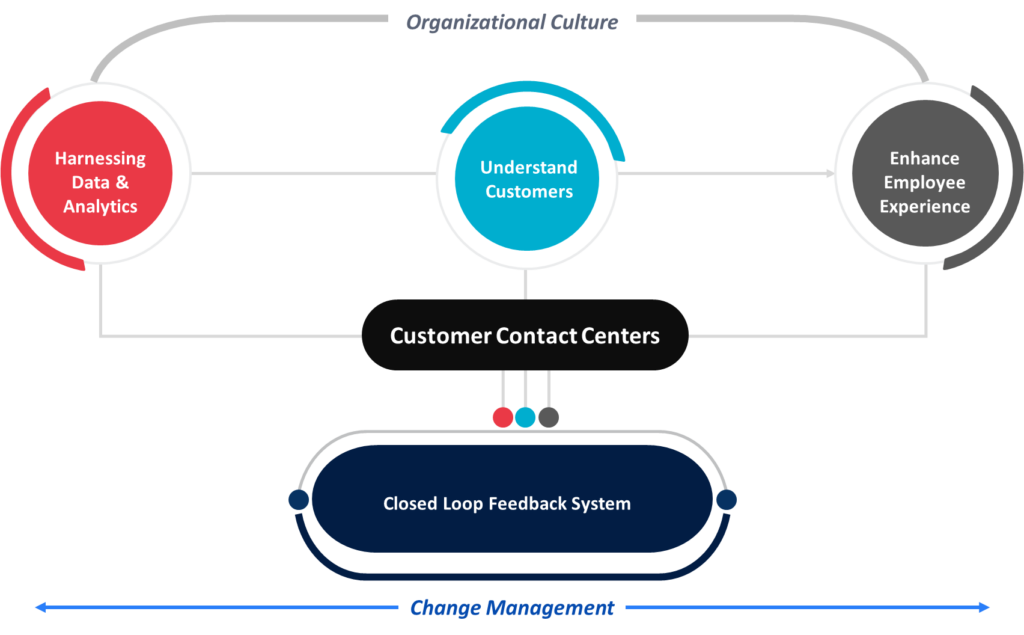Transforming Customer Experience in Contact Centers using AI
3AI May 13, 2022

Author: Sudha Bhat, AVP – Customer Analytics, Genpact
Modern customers are conscious buyers and do not settle for less. The pandemic has further emphasized the need to provide an exceptional customer experience. Customer support is one of the critical touchpoints to drive experience. It is even more relevant in today’s super competitive digital era, where a brand is either built or destroyed due to customer experience. New-age digital technologies, such as artificial intelligence (AI), have tremendous scope across industries in the way organizations are using them for their benefit to provide exceptional services. Contact centers are central to the transformation buzz. And they are streamlining their digital journeys using customer insights, data-driven performance management, virtual assistants, automation, and personalization.
Digital technologies and advanced analytics techniques have provided ample opportunities to enhance CX through contact centers. And to top that, the cloud has taken things to a whole new level. Contact centers can now harness data across multiple touchpoints from a single source and use it to deliver a superior experience. According to a recent Gartner research, CCaaS (Contact Center as a Service) will be the preferred model of adoption for 50% of all contact centers and should be worth around $28.6 billion by 2025. However, many organizations are still stuck with their legacy systems. This limits their ability to engage and meet changing customer requirements. To address these challenges, cloud-enabled contact centers provide the much-needed flexibility and scalability to leverage advanced analytics and artificial intelligence for analyzing customer behavior and data patterns while predicting future needs to create that wow moment for customers.
The road to any transformation is not easy. And simply investing in high-end technologies will not help in the long run. It is important to uncover ways to keep the customer as the focal point. And this helps in drafting the vision and strategy for a contact center that delivers and delights. There must be room for utilizing analytics and frameworks to link to an overall business strategy and allow for stronger operationalization models. Even data stored across disparate sources is critical. Contact centers, these days, are prioritizing on data ecosystem for desired CX transformation outcomes and process improvement opportunities. At times, there might be a need to rope in a partner ecosystem for tech or talent collaboration.
Traditional contact centers are a thing of the past. They’ve transformed into centers supporting multiple channels, including digital ones. A survey from Forrester mentions that digital customer service interactions will increase by 40%. It implies a need for a holistic transformation strategy. Critical elements that form the core of a transformation are:
- Harness the power of data and analytics
Gathering data, transforming data to suit expected outcomes and mining it can drive actionable insights at the centers. Merging digital and offline data into a common data lake allows you to get drills on operational performances and 360-degree customer views.
- Understand customers
For sustainable growth, contact centers must focus on understanding actual customer issues and expected outcomes. The tools or facilitators that can help in the process are journey maps, customer interviews, competitor analysis, customer feedback analysis, online reviews, frontline employee discussions and subject matter expert interviews.
- Enhance employee experience
Empowering frontline staff should be a critical priority. Coupled with relevant technologies and data nuggets, they can become brand ambassadors for enhancing CX and providing internal feedback on current pitfalls.
- Closed-loop feedback
Aggregating feedback is a way to uncover opportunities and successes. Analyzing this vast wealth of customer feedback is the key to new learnings and can become an effective source of actionable insights. A solid closed-loop feedback framework helps customers feel heard.

Final thoughts
Organizational culture is the key to a successful transformation journey. It begins at the top by nurturing the importance of a customer-centric and data-driven strategy while building awareness across functions. A successful transformation will need a change management pillar. Most transformation programs fail due to a lack of clarity on goals, expected outcomes, and, of course, limited communication. Ensure proper alignment across functions to latch on to a shared vision and identify success metrics to avoid resistance or conflicts.
Remember, the purpose behind any transformation is to ease and make processes agile and experiences enjoyable. And empathy is the foundation for that. Analytics and AI are just enablers in this journey. These, when coupled with the right strategy, can empower contact center teams to deliver memorable and personalized experiences. Thus, driving growth for businesses and creating that lasting impact that your customers yearn for.





